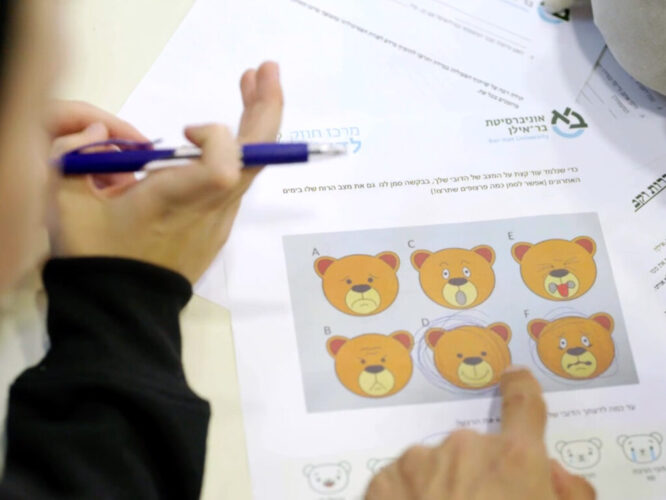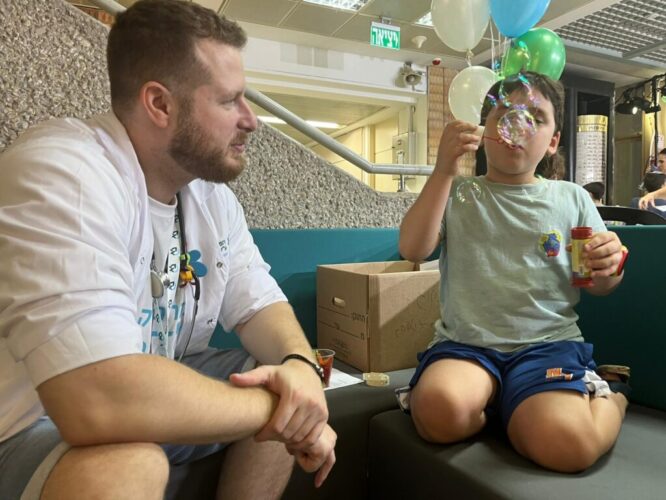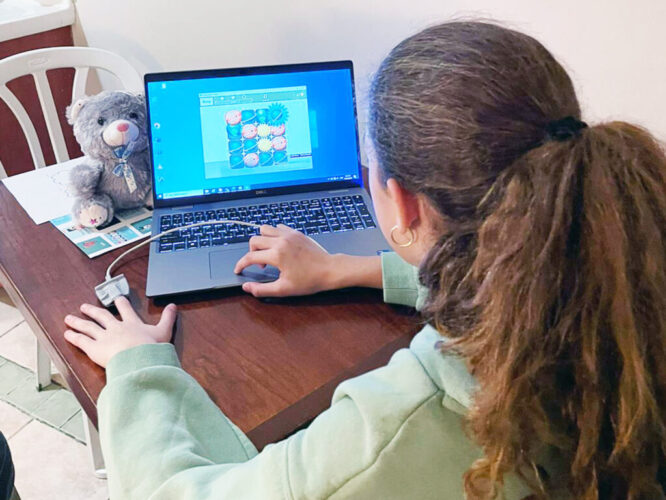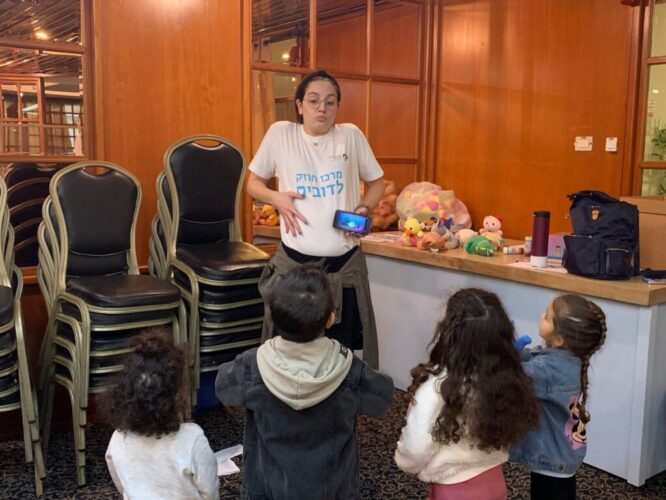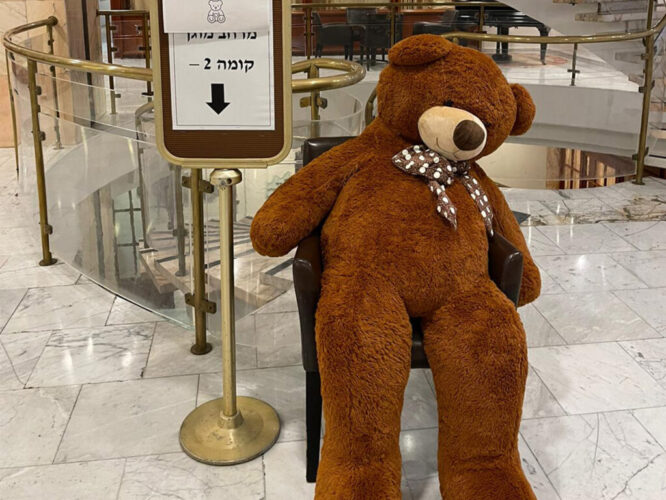Help From Our (Furry) Friends
The teddy-bear strength and resilience center
Help From Our (Furry) Friends
Empowering children to care for “traumatized” teddy bears not only helped build their capacity to cope with the atrocities of October 7th. As a unique interdisciplinary pilot shows, the intervention also enhanced caregivers’ ability to help children heal.
The Power to Heal
For more than a decade, the Azrieli Faculty of Medicine used its popular “Teddy-Bear Hospital”—an event in which medical students help children to “treat” their stuffed animals and dolls—as a way to alleviate the anxiety young people feel about medical care. In the days after October 7th, however, Dean of The Azrieli Faculty of Medicine Prof. Orly Avni realized the method could be leveraged into a larger intervention to help children who experienced the day’s horrors set themselves on a path to recovery. All she needed, she told Prof. Noa Vilchinsky of the Department of Psychology, was a little help from her friends.
“The initiative’s innovation lies in its integration of three different entities: the Azrieli Faculty of Medicine, the Department of Psychology, and The Louis & Gabi Weisfeld School of Social Work, each of which complemented the others’ expertise and raised the standard approach to treating trauma to the level of holistic care,” explains Vilchinsky, who built a team of experts in the fields of trauma and child and family coping, including Prof. Rachel Dekel and Drs. Tamar Zilberg and Tali Gev. Together with their students, they developed a protocol that uses teddy bears as a tool for teaching children to recognize and manage the stress of traumatic memories, ongoing trauma, and anxieties surrounding an uncertain future. Within weeks, dozens of medical, psychology, and social-work students were bringing the intervention—which included an “emotions clinic” and diverse medical-treatment stations for injured bears—to children around the country who were displaced from their communities.
And, Vilchinksy is quick to add, to their families, too. “The beauty of this protocol, which we term the Teddy Bear Strength and Resilience Center, is in its layers, and the way it works on multiple levels and reaches multiple audiences at once,” says Vilchinsky. First, there is the combination of the physical and emotional, since “children often express stress through their body, although they don’t realize the connection,” she explains. Then there is the fact that by helping their children “treat” their bears, parents learn what their children are feeling and how to help them cope, too. And finally, by involving students from three disciplines, the protocol trains Israel’s future health professionals to adopt a broader perspective on treatment than what they learn in their own fields. “Just as this protocol taps into children’s own natural resilience,” concludes Vilchinksy, “so, too, will Israel’s caregiving field emerge stronger, and offer lessons for other countries’ professionals in how to address cataclysmic events.”
Bear Hug
How the Teddy Bear Strength and Resilience Center is creating circles of healing and empowerment across the Jewish state:
Community-wide interventions delivered to date
Children helped directly
Medical, psychology, and social-work students involved in the intervention
